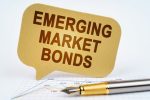With domestic fixed income offerings faltering at the hands of the Federal Reserve’s six interest rate increases, investors are understandably apprehensive about U.S. bonds. Add emerging markets to the mix and the jitters are likely to increase.
However, that doesn’t mean exchange traded funds such as the VanEck Emerging Markets High Yield Bond ETF (HYEM) should be written off. Actually, the opposite is true, particularly at a time when there’s a budding sense among bond market experts that the Fed may have some leeway to dial back the fevered pitch of its rate increases in 2023.
For investors considering HYEM, that would be meaningful because the ETF, which tracks the ICE BofA Diversified High Yield US Emerging Markets Corporate Plus Index, holds dollar-denominated debt. Translation: When the greenback is strong, as has been the case this year, dollar-denominated bonds issued by foreign governments usually lag.
“Central bank rate hikes in both emerging and developed markets have led to higher fixed-income yields across the board, providing investors with significantly higher levels of carry compared to the start of the year. Compared to the U.S. and other developed markets bonds, EM bonds not only provide significantly higher nominal and real yields on average but also shorter durations,” noted Fran Rodilosso, VanEck head of fixed income ETF portfolio management.
Still, some investors are apt to view emerging markets’ high-yield debt as a risky asset class. However, HYEM compensates investors for that perceived risk. The fund sports a 30-day SEC yield of 9.45% — a significant premium relative to standard US-focused junk bond ETFs.
HYEM delivers that big income with an effective duration of just 3.51 years, which is short considering that yield. Additionally, 84% of the fund’s holdings are rated BB or B, indicating HYEM isn’t stretching into highly speculative simply in the name of yield. Something else to consider: HYEM could be a viable option if inflation remains elevated in 2023.
“Inflation remains persistently high, and the Federal Reserve has signaled that while it may start to slow the pace it is not yet done with rate hikes. In this environment, EM bonds may be particularly appealing compared to U.S. and global bonds as a source of income. EM USD High Yield Corporate Bonds currently provide the highest yield per unit of duration, substantially above U.S. HY bonds due to both a higher yield and lower duration,” concluded Rodilosso.
For more news, information, and analysis, visit the Beyond Basic Beta Channel.
The opinions and forecasts expressed herein are solely those of Tom Lydon, and may not actually come to pass. Information on this site should not be used or construed as an offer to sell, a solicitation of an offer to buy, or a recommendation for any product.







